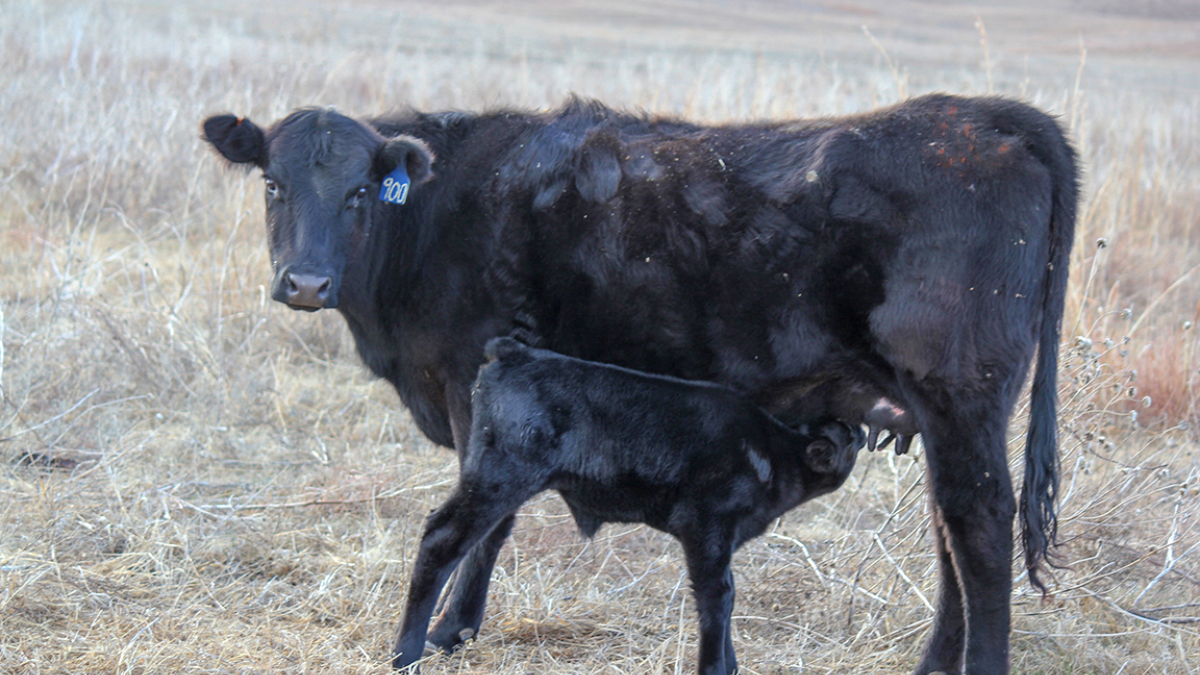by Karla Wilke, Nebraska Extension cow-calf and Stocker management specialist, and Kacie McCarthy, cow-calf specialist

Lincoln, Neb. —Getting first-time mother cows bred for the second time is probably one of the strongest challenges for most beef producers. It can be extremely frustrating at the time of pregnancy diagnosis to find a high percentage of those young cows, the future of the cowherd, to be open. More importantly, it is expensive.
In addition to the loss of income from the potential calf crop, is the depreciation of the cow. If a bred heifer is developed or purchased for a value of $2800 and is sold as a slaughter cow after one calf for $1350 (current market value in Nebraska), then the depreciation cost of that cow is $1450. That is a substantial loss.
Producers often express the sentiment that they do not baby their heifers because if a heifer cannot make it in their environment, she does not need to be there. There is value in that statement in that selecting heifers for milk production or maintenance requirements that do not match what the environment can provide is likely to result in cows not breeding or not breeding on time.
However, the other side of that argument is that mature cows do not have the same requirements as growing, lactating first calf heifers. It is a little like expecting apple and orange trees to produce apples. One tree can do it rather well, while one cannot do it at all.
Growing, lactating cows have greater nutrient requirements and smaller rumens than mature cows making it difficult for them to meet their nutrient needs with the same diet as the cow. Therefore, young cows managed on a different ration, and in a different pasture or pen from mature cows allows them to consume a diet more balanced for their needs and removes competition for feed from older bigger cows.
For example, if all cows and heifers were fed 3.5 pounds of dried distillers as a supplement per day and given the rest of the diet as good quality meadow hay, this would meet the mature cow's energy and protein needs. The heifer, because of her smaller rumen size and increased nutrient requirements, would likely be short 2 pounds of total digestible nutrients (TDN) per day. TDN is used as a measure of energy the cow requires.
While most heifers would be turned out to lush green grass during breeding and would most likely be able to meet their nutrient needs at that point, it is important they are not below a body condition score (BCS) 5 on a 1-9 scale at that point. Research has shown a young cow in a BCS 4 does not breed back as well as those in a 5 or 6. Therefore, first calf heifers need to achieve a BCS 6 by calving.
Many heifers are maintained on hay and supplement two to three months before breeding but after calving. Lactation and growth are large nutrient requirements for the heifer, and whether or not those needs are met can determine whether she can stay in the herd or not.
Research from Nebraska has shown that heifers calving earlier in their first calving season remain in the herd longer and produce heavier calves at weaning. These heifers are more likely to be cycling by the start of the subsequent breeding season and more likely to get pregnant, which increases profitability and longevity. These data are a good reminder to set up replacement heifers well for this breeding season, ensuring that their nutritional requirements are also being met. For more information on developing heifers to stay in the herd, visit Heifer Development and Long-term Profitability | UNL Beef
Ensuring that young cows are being set up for success moving into subsequent breeding seasons through adequate nutrition, health, and reproductive management will be crucial to herd profitability and a successful approach in the upcoming breeding season.
Producers who would like assistance with ration balancing can contact their local Nebraska beef extension educator.
Links for related topics can be found at www.beef.unl.edu
Selecting heifers - What to Consider When Selecting Replacement Heifers | UNL Beef
Nutrition - Cow Nutrition Considerations at Calving and Early Lactation | UNL Beef
https://beef.unl.edu/beefwatch/2022/adequate-nutrition-breeding-season-success
What does the Drought of 2022 mean for Lactating Pairs in the Spring of 2023? | UNL Beef
Management- https://beef.unl.edu/beefwatch/2021/managing-postpartum-anestrus-beef-cows-successful-breeding-season
https://beef.unl.edu/beefwatch/2023/options-estrus-synchronization-breeding-season
https://beef.unl.edu/beefwatch/2021/managing-summer-calving-herds-during-breeding-season